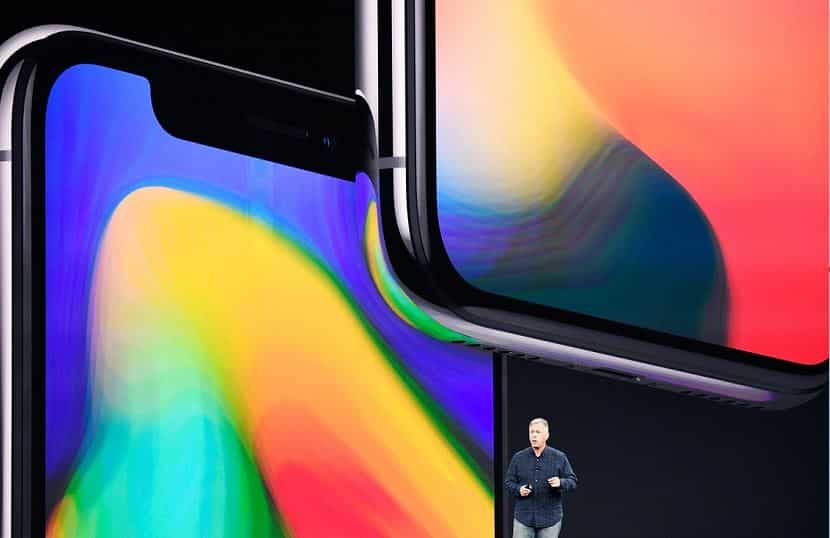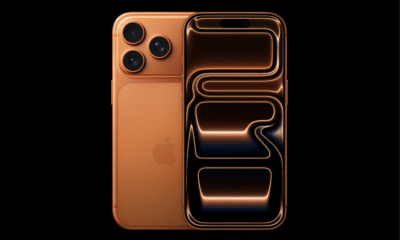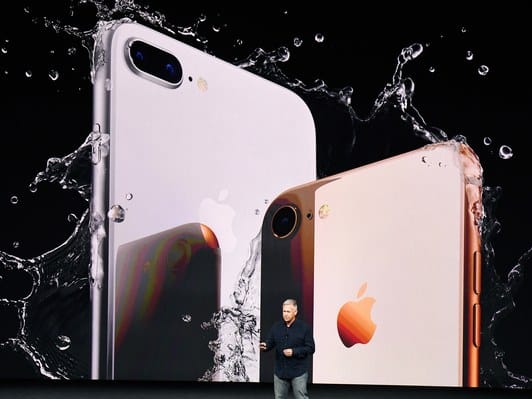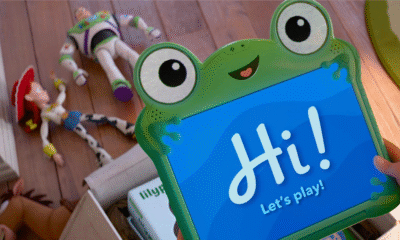News
Meet the iPhone X, Apple’s new high-end handset
It’s the most complete redesign of the product ever and even offers a glimpse at what the iPhone might become when the world no longer wants smartphones.
The new iPhone X packs more new stuff into any device since the original iPhone. It’s the most complete redesign of the product ever and even offers a glimpse at what the iPhone might become when the world no longer wants smartphones. Of course, you probably won’t buy one. Even if you can afford the super high price, getting your hands on an iPhone X in the next few months will be like hunting for the holy grail. Except in this case, the fancy one is the right answer.
Today, at an event in Cupertino that doubled as a grand opening of its new spaceship of a campus, Apple launched three new iPhones. Yes, three. The iPhone 8 and 8 Plus upgrade the existing models without completely changing them. (More on those in a second.) The third model, the iPhone X, is another thing entirely.
Meet the X
First of all, the X looks like no other phone. It doesn’t even look like an iPhone. On the front, it’s screen head to foot, save for a small trapezoidal notch taken out of the top where Apple put selfie cameras and sensors. Otherwise, the bezel around the edge of the phone has been whittled to near-nonexistence and the home button disappeared—all screen and nothing else. The case is made of glass and stainless steel, like the much-loved iPhone 4. The notched screen might take some getting used to, but the phone’s a stunner. It goes on sale starting at $999 on October 27, and it ships November 3.
The screen itself, called a Super Retina Display, is a 1125×2436 OLED display reportedly made by Samsung. It’s the first time Apple’s used OLED tech in an iPhone, and it offers some big advantages. On a normal LCD screen, even black pixels are lit up a bit, which means you’re never seeing true black—just really dark gray. OLED, on the other hand, can light some pixels but not others, which means black pixels just stay off. Your dark colors will seem much darker, other colors even richer, and even text becomes more pleasant to read. Apple’s also incorporated its TrueTone technology for white-balancing the screen in different conditions, which should make everything look even better.

Even with the huge screen, the iPhone X more closely resembles the iPhone 7. The iPhone’s screen-to-size ratio was always one of the smallest in the industry, thanks to the home button and Apple’s undying love for design symmetry. Getting rid of the home button allowed Jony Ive’s design team to get rid of so much more—just imagine your iPhone 7, but everywhere there’s metal, imagine screen. That’s the iPhone X.
Like the other two phones, the iPhone X runs Apple’s latest processor, the A11 Bionic, along with 3 gigs of RAM. It’s been years since the iPhone wanted for processing power, but the iPhone X might need all it can get. It has to power all that screen, for one thing, but Apple also seems to have created the iPhone X as a foray deeper into both artificial intelligence and augmented reality. Both require serious horsepower.
The iPhone X’s stated battery life has improved—Apple says it lasts two hours longer than the iPhone 7—and so has its charger. After years of observing the Android ecosystem’s messy and multi-standard embrace of wireless charging, Apple’s finally in the game. You won’t have to plug your X into the wall to charge it; you’ll just lay it down on the inductive pad. Apple is adopting the Qi standard, so it will work with current Qi pads by companies like Mophie and Belkin. Apple is also releasing its own charging accessory called AirPower that has room for your iPhone and your Apple Watch.
The camera, of course, has always been one of the iPhone’s standout features. rolling out a series of upgrades to the experience: You’ll be able to capture slow-motion film in higher definition or shoot film-style 4K. With the new Portrait Lighting mode, you’ll be able to tweak the flash on the back of the iPhone to fill a little more naturally—or make it look like your subject’s lit by a spotlight on stage. Up to you.
The back-facing camera array has been rotated 90 degrees so the bump runs vertically. Inside are dual 12-megapixel cameras, just like in iPhone 8 Plus, with f/1.8 and f/2.4 apertures. Dual optical image stabilization mitigates shakes in both cameras. The Samsung Galaxy Note 8 has this too, and it looks amazing. The iPhone X’s camera array also has a quad-LED True Tone Flash.
Turn and Face the Strange
In terms of how you actually use your iPhone, the new Face ID may be the most important new feature of the iPhone X. When you first start using an iPhone X, you’ll go through a short setup, the face version of registering your thumbprint—you’ll peer into the front-facing camera, framing your face just right, then turn your head left and right so the iPhone’s sensors can get a good look.
Once you set up Face ID, the feature essentially replaces your fingerprint. You’ll unlock your phone by holding it up to your face, pay for things by holding it up to your face, and log in to apps … by holding it up to your face. It requires your attention to unlock the phone, and Apple says it has done extensive work to make sure masks and photos can’t fool it. Apple appears to see the feature as a way to help you use the phone while you’re using it. The iPhone X can double-check whether you’re using the phone before shutting off the screen, and if it sees you’re looking it won’t play loud alert sounds. There are a lot of things Apple could do when it knows you’re looking at the phone, many of them cool and some of them very creepy. (Be sure to read Andy Greenberg’s initial dive into the security of Face ID.)
All of these facial-recognition features are made possible by an array of cameras and sensors packed into that notch at the top of the screen. The TrueDepth array, as Apple calls it, projects infrared dots onto your face to map it, captures that image, then uses a dedicated processor to interpret the face data. The promise is that it can always be sure it’s really you looking at the phone, even if you’re wearing glasses or you change your hair or grow a beard. The same tech that powers Face ID also comes to life inside the new Animoji, which are iMessage emoji that map to your face, so you can put your voice into the mouth of a unicorn or a dog. Not creepy!
Apple touted Face ID as both more secure and more convenient than a fingerprint, and the onstage demos certainly made it look that way. It’s very fast; about as snappy as Touch ID. But Samsung and others have already tried to make the feature work, and it’s been neither secure nor convenient.
Lucky Number 8
If you can’t get your hands on an iPhone X in the near future, Apple still has two new models for you. The iPhone 8 and 8 Plus both look like the iPhone 7—with home buttons!—but offer a few big upgrades to match the iPhone X. Both new models support wireless charging, run the latest A11 Bionic processor, and have 2 gigs of RAM. They also have glass backs, which gives them a glossy new look. They don’t have OLED screens, but they’re getting the same TrueTone tech as the X, and they can shoot video in 4K.
In most years, the iPhone 8 and 8 Plus would be the “S” phones, a mid-generation upgrade. But this year, partly as a show of strength and partly to keep up with the Note and Galaxy numberings, they’re the iPhones 8. You can buy them in black, silver, and a newly retooled gold finish for $699 and up for the regular one, $799 for the big one. You can preorder the 8 and 8 Plus on September 15, and the phones arrive in stores on September 22.
If you’ve been obsessively following rumors and firmware leaks, little about the iPhone announcements came as a surprise. After Tim Cook promised to “double down on secrecy,” the secrets spilled faster than ever. Bloomberg’s Mark Gurman reported many of the device’s details, as did developer Steve Troughton Smith. But the biggest leak came last weekend, just a few days before the announcement, when the final build of iOS 11 leaked to 9to5Mac. The firmware was absolutely loaded with details, from Animoji images to Face ID setup videos to the names of the new devices. This was Apple’s biggest announcement in years, and possibly its least surprising.
Still, the iPhone X should excite you. Not just because it’s cool-looking and futuristic, one giant step closer to the “just a screen in your hand” device so many science fiction lovers imagined. This iPhone moves a number of important ideas forward. Apple has the unique power to make, say, wireless charging work—and between the three new models, Apple instantly makes relevant whatever standard it chooses.
Most of all, the iPhone X makes a powerful statement that augmented reality is coming. It might be here already. When Apple launched the iPhone 10 years ago, the device was three things: a phone, an internet communicator, and an iPod. It’s so many more now, to so many more people, but the iPhone X may be the first to be redesigned around a specific new purpose. The more dynamic screen, the vertically stacked cameras, the tiny bezels, the faster processor—all those things work together to make the iPhone X primarily about what’s on the other side. You’re not supposed to look at this device, but through it.
This article was originally published in Wired.
Disclaimer: The views and opinions expressed in this article are those of the authors and do not necessarily reflect the official policy or position of the publication












































Pingback: Law firm that advised Samsung will represent Israeli startup suing Apple for infringing camera technology
Pingback: Apple acquires app development startup Buddybuild; looking to make iOS a more attractive platform